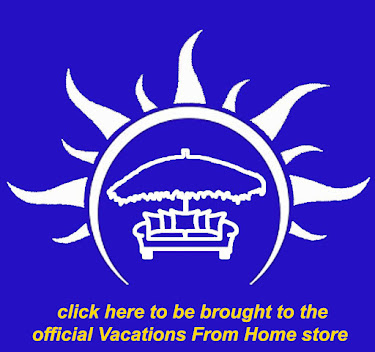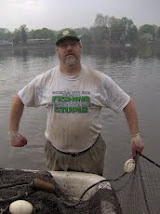THE POWER OF POSITIVE
DRINKING
As if anyone needs an
Oktoberfest celebration for a reason to drink beer. This is especially so here
in Pennsylvania where there is a rich history of beer drinking. Philadelphia even has a section called
“Brewerytown” and during its height in the late 1800s there were several
breweries clustered in a 10-block area, and at one point there were 100s of
breweries scattered across the city.
Early on Pennsylvania
embraced the “craft” and "micro-brewery” movement and the proliferation of these
varied brews can be found in every corner bar and hipster hang out throughout.
Even the dive bars have at least one or two or more beers that ARE NOT Bud,
etc. on-tap.
KEEP ON QUAFFING ON
So, as the Oktoberfest season
is upon us there is not a lot of extra “celebrating” here in southeast
Pennsylvania, it is just another weekend. And, in Phoenixville, just a 5-mile
uber drive from our Collegeville address, the beer flows generously as each
weekend the main street is blocked off and beer revelers crawl from pub to pub,
with nary any lederhosen in sight.
PURITY LAWS
Although, there are
scattered attempts in Pennsylvania at upholding the Oktoberfest tradition that
started in 1810 in Munich as a celebration of the wedding of Crown Prince
Ludwig and Princess Therese of Saxony-Hildburghausen, with wavering results.
In the past we have
attended some lively Pennsylvanian Oktoberfest celebrations that featured
oompah bands and dancing and a parade with the roasted pig. Some even serve
beer only brewed according to the Reinheitsgebot or “purity laws” that state
only barley, water, hops and yeast are the only allowable ingredients.
DIRNDL, LEDERHOSEN AND
KOLSH OH MY!
 |
| PARTY ON |
There are two notable
Oktoberfest celebrations around Reading. One is the highly rated Reading
Liederkranz, it is considered quite authentic. We haven’t had a chance to get
to this one. Here is their website:
Stoudt’s brewery in
Adamstown, not far from Reading, used to have a phenomenal Oktoberfest, like if
you’re not sporting lederhosen you’re underdressed. It featured everything from
requisite brews and a parade through the crowd with a roasted pig, dancing and
bouts of drinking songs.
One of the earliest
craft breweries, Stoudt’s started in 1987 but closed when the brewmaster Carol
Stoudt retired in 2020. We attended this one several times over the years.
Janet even got on stage to flail about with her accordion.
*There is an update on
Stoudt’s. It turns out that a collaboration between Stoudt’s and another area
craft brewery, Evil Genius, have restarted the brand with Carol giving advice
on recipes, etc. There was also this past weekend the second annual “Stoudtoberfest”.
Set in a faux Bavarian village square created as a shopping area, Stoudtoberfest
had beers, music and stein hoisting contests. Despite the slight constant
dreary drizzling we had a great time.
Here is the website for
Munich’s Oktoberfest:
RISING FROM THE RUST
BELT
But, this article is
really about the beer scene in Phoenixville.
The town had a rich
history before it became a beer destination.
Phoenixville was once
the site of the historic Phoenixville Iron Company, which cast most of the
cannon used in the Civil War by the Union. When the company closed its doors in
1987 the town suffered a severe economic downturn.
The 1958 science
fiction horror film The Blob was filmed mostly in town and the Colonial Theatre
was featured prominently when the titular critter from outer space oozes out of
the projection booth. Each July the Blobfest is held, and patrons can recreate
the pandemonium of the film as they partake in the “run-out,” which is a highly
sought after ticket.
 |
Colonial Theatre
Plaque |
Activities like the
Blobfest and the convivial atmosphere of the many restaurants, shops,
distilleries and breweries have had a great positive impact on the regrowth of Phoenixville.
Here’s a sample of what Phoenixville offers as a beer destination and drink responsibly:
BREWERIES:
Rec Room at
Conshohocken Brewing
 |
| Rec Room |
Spacious area with
several bars on premises offering Conshohocken Brews, with free (at least
during the day) shuffleboard, table tennis and pool tables.
Stable 12 Brewing
Company
On Bridge Street, the
main drag that’s closed off weekends, but beyond the enclosed area. Good beers,
finger foods, open area with tables and a small stage for music.
Root Down Brewing
Big airy building steps
away from Bridge Street. Great array of beers.
Twelve78
Newest brewery in town.
Nestled near the parking lots when you first enter town coming south. In a
converted garage. Live music sometimes. |
| TWELVE78 BREWING |
Rebel Hill Brewing
Company
Across the street from
the Colonial Theatre
Sly Fox
Various locations.
Phoenixville’s is just outside of town on Route 113. Great burgers, even better
beers. Try my personal favorite their 113 IPA or Odyssey if it’s on tap.
RIP:
 |
| Stable 12 |
Iron Hill
One of the original
brewpubs. Fantastic array of beers and great food. Various locations were in
Delaware and Pennsylvania, but in September they abruptly filed for bankruptcy
and all brewpubs were closed. Very sad
Notable Drinking
Establishments in town:
Bistro on Bridge -
Oktoberfest
Large rotating taps of
beers from all over the area, plus descent food. There’s an open air bar
upstairs that only serves cans, although the recent weekend we went there, they
were having their mini-Oktoberfest celebration. Several Bavarian beers on tap, German
delicacies and even the mayor of Phoenixville pranced around looking
resplendent in his lederhosen.
Rivertown Taps
Steel City Coffeehouse
and Brewery
It is a coffeehouse, a
music venue (we saw Steve Forbert there a while ago) and they serve food,
coffee and a couple of beers brewed specifically for them by an area brewery.
Great American Pub
In the beginning of
Phoenixville's regrowth, it was only Iron Hill and the Great American Pub in
town. A beautiful old Oak bar inside and a modern airy bar in the back.
Different beer lists at either bar but can order from both. Good food.
Sedona Taphouse
A chain establishment
but has good food and a nice beer list…. In Phoenixville they’d better.
Molly Maguires
Standard issue Irish
bar. Guiness for all. Seating on the street and on the balcony overlooking the
steel works across the street.
Fenix
Next door to Molly
Maguires. It’s quieter and a great place for mixed drinks. Our go to for a
martini.
Foodery
Don’t worry about
finding a particular beer in this beer emporium. You want it, they probably
have it. A chain, there is one on Rittenhouse Square in Philadelphia. Some food
available and there are tables outside to enjoy your choice.
Distilleries: (In case you don't want a beer)
Boardroom (partnered with
Boardroom Spirits Landsdale)
Blue Bird Distilling
Nearby:
Lock 29 (across the bridge in
Mont Clare)
Fitzwater Station
 |
| FITZWATER STATION |
Along the canal across
the river from Phoenixville proper. Mont Clare is where the Sundance Kid (not
Robert Redford) was born. Great beer list and even better barbeque. Sit on the
deck overlooking the canal. You can even rent kayaks.
Troubles End (Collegeville)
The day after Troubles
End opened the COVID pandemic hit, but this thriving establishment just down
the block from our place in Collegeville has a great selection of house and
guest taps and cans. Great chef. Great location, because we can walk there!
So, Oompah your way through
the Oktoberfest in Phoenixville, even if it’s just another weekend.
Prost!
Thanks for reading, and
you’re all welcome to come by and buy us a beer.
Love, Janet and greg
© 2025 by Gregory Dunaj



.jpg)

































































